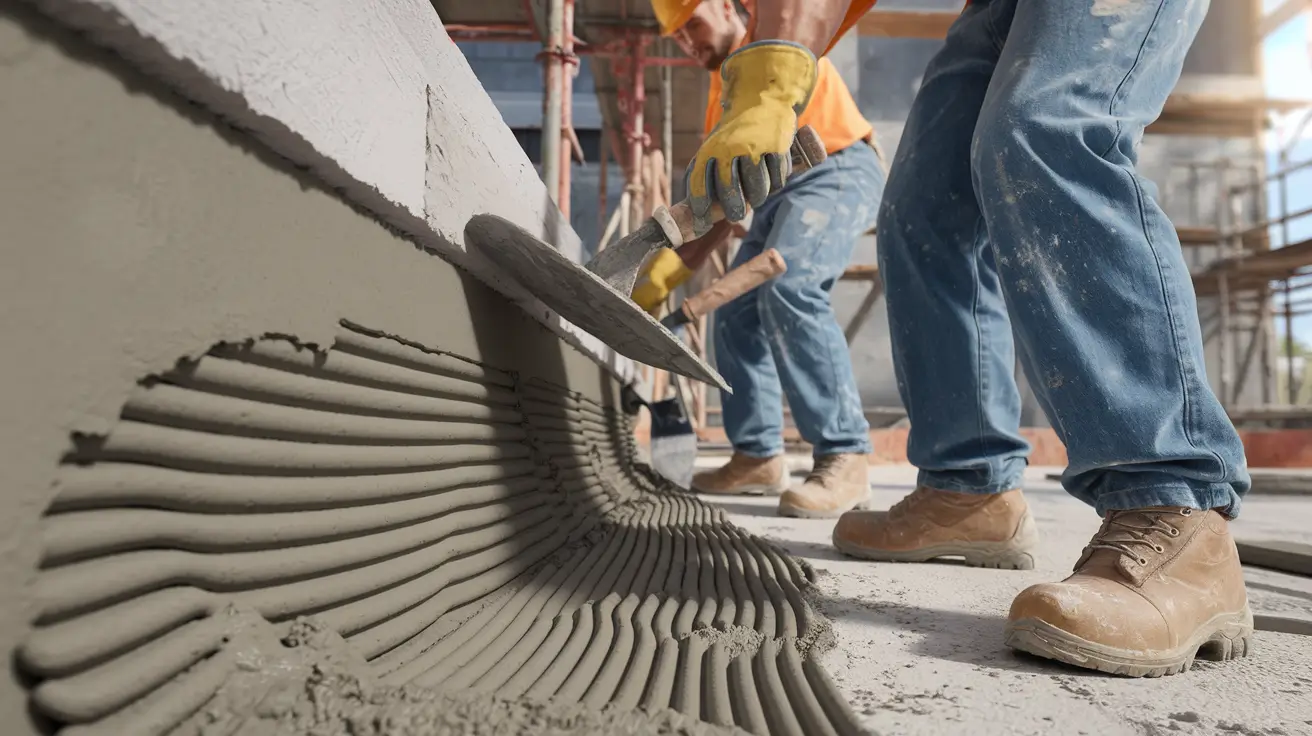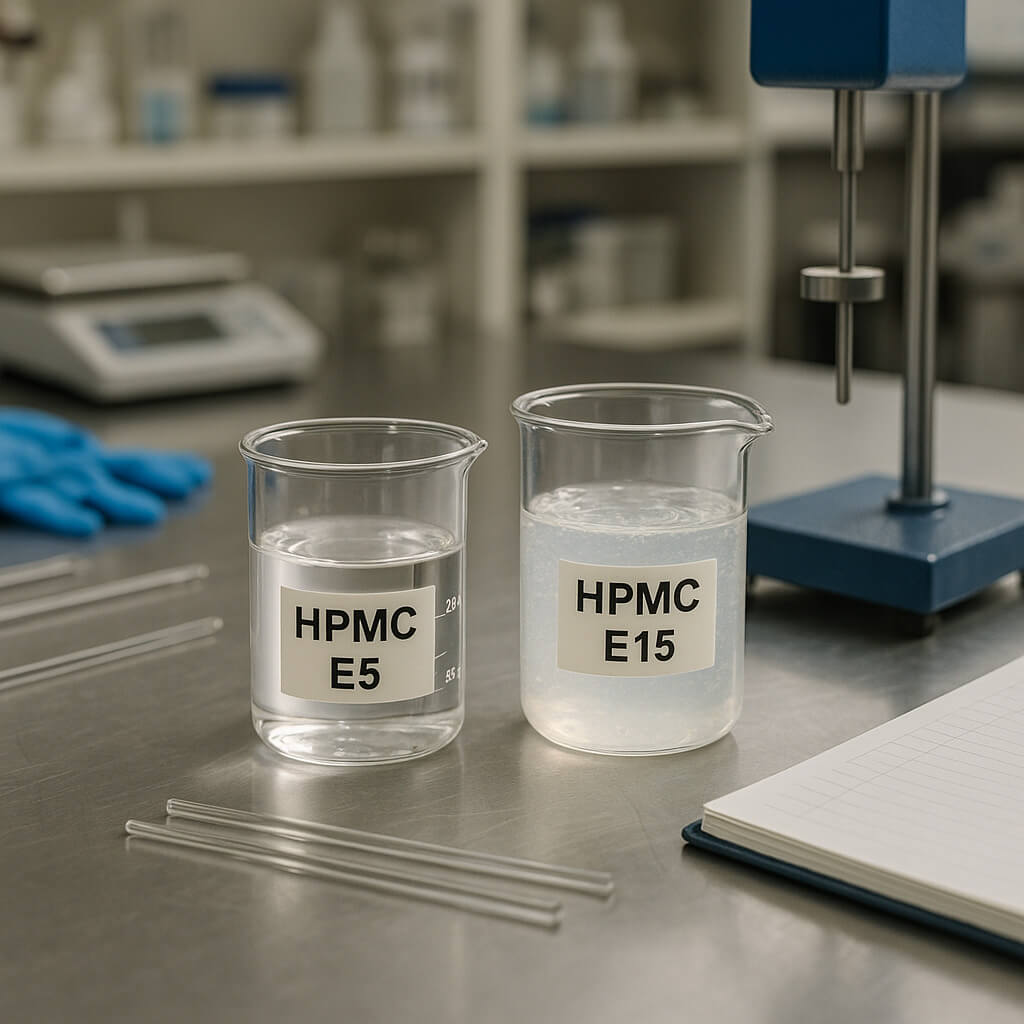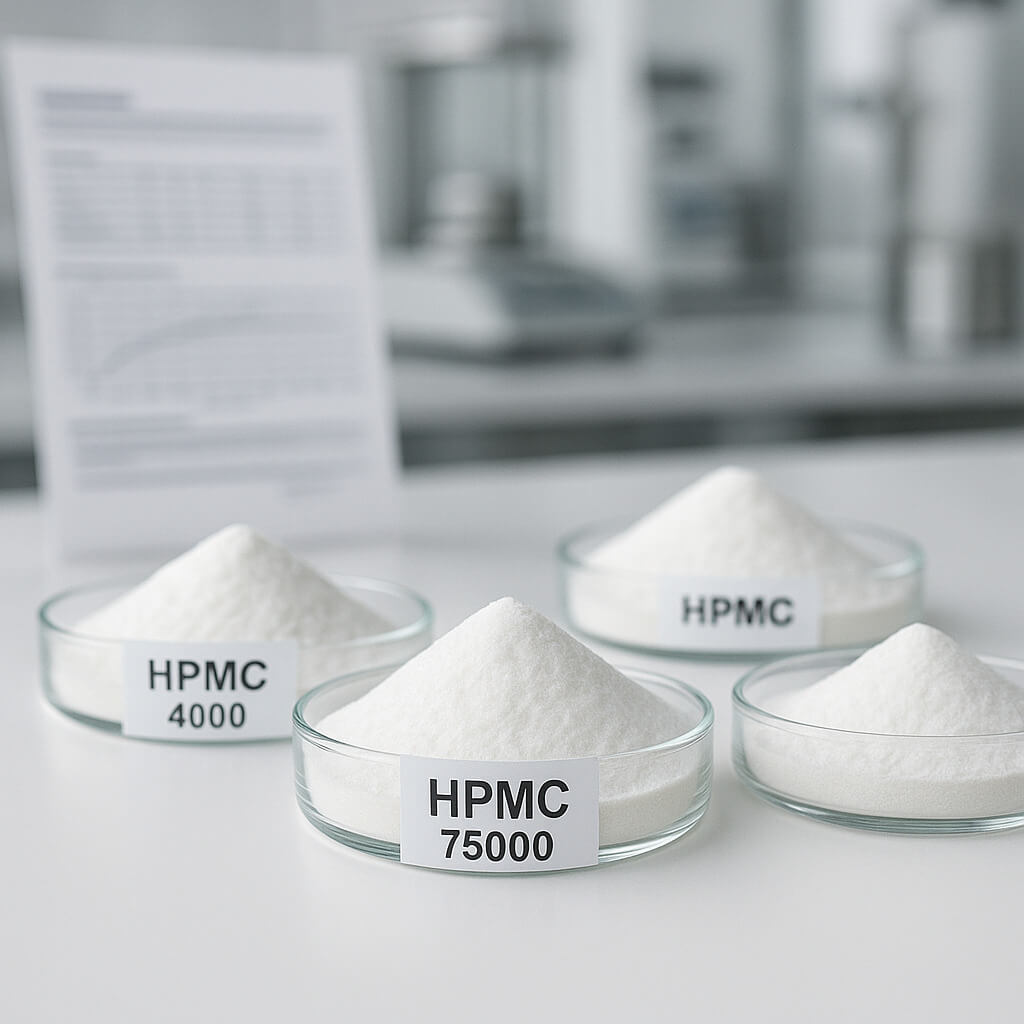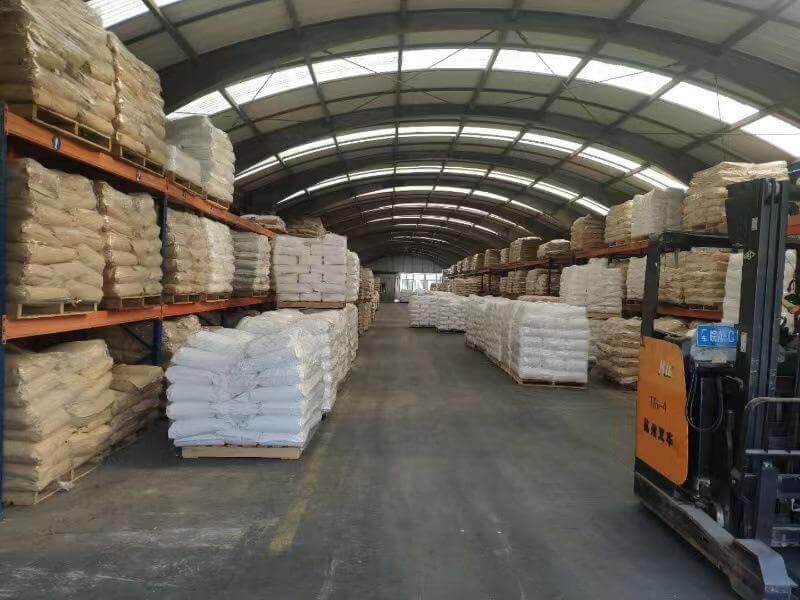Navigating material selection for industrial uses is hard. Businesses often face product issues from not understanding key ingredient properties. This causes delays, failures, and unhappy customers. The bottom line? Without precise control over materials, your operations and reputation suffer. This article explains HPMC water solubility, its impact across industries, and how understanding it can boost your business.
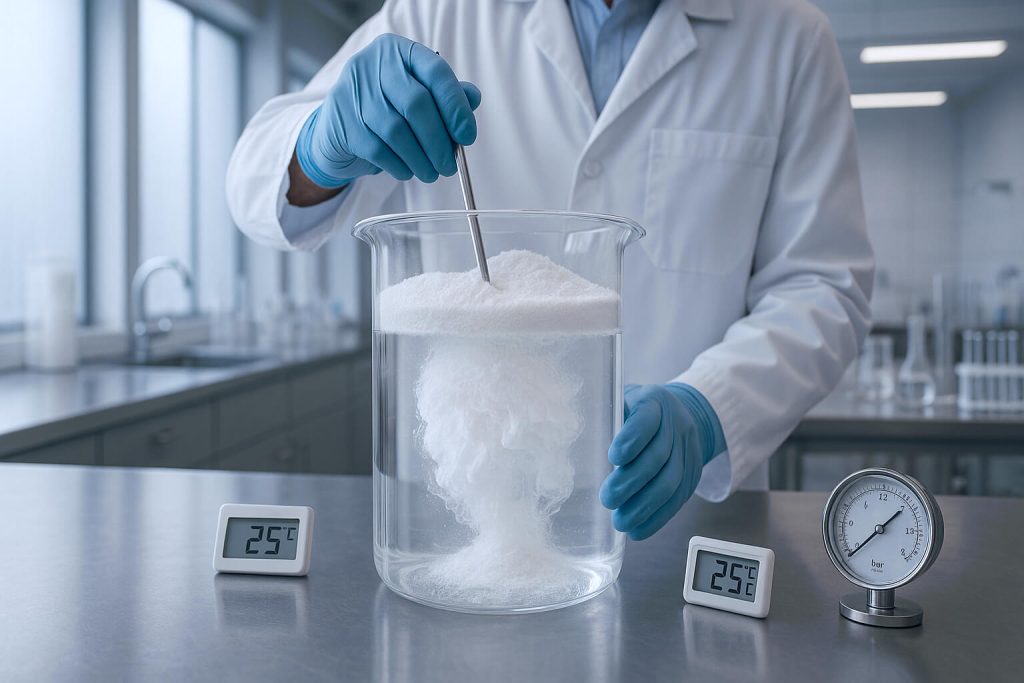
1. What is HPMC and Why is its Water Solubility Important?
Hydroxypropyl methylcellulose, or HPMC, is a polymer from cellulose. Manufacturers change natural cellulose to make it. This creates a non-toxic, biodegradable, and safe material. HPMC is used widely. It is valuable in drugs, building, food, and personal care. HPMC has both water-loving and water-fearing parts. This helps it work with water in special ways. This interaction is key to how it functions. Different HPMC types exist. Each type has different substitution levels and weights. These differences change its solubility and how it performs.
Water solubility is a key HPMC property. It shows how the polymer acts in water. When HPMC dissolves, it makes a thick liquid. This thickness is vital for its use as a thickener, binder, or film-former. How fast and how much it dissolves affects product quality. It also impacts how well it processes. For example, in building, good dissolving means mortar works well. In drugs, it controls how medicine releases. Things like heat, pH, and particle size change HPMC solubility. Knowing these helps make better products. Here’s why it matters: exact control over HPMC solubility makes products work as expected. Businesses must pick the right HPMC type for their use. This choice directly changes the final product. Bad solubility can cause product flaws. This costs money and hurts reputation.
| Property | Description | Impact on Solubility |
|---|---|---|
| Molecular Weight | Average size of polymer chains | Higher molecular weight generally means slower dissolution and higher viscosity |
| Hydroxypropyl Content | Amount of hydroxypropyl groups | Higher content increases hydrophilicity, improving cold water solubility |
| Methoxy Content | Amount of methoxy groups | Affects gelation temperature and thermal stability |
| Particle Size | Fineness of the powder | Smaller particles dissolve faster due to increased surface area |
| Surface Treatment | Chemical modification of particle surface | Can prevent clumping and improve dispersion |
2. How Does HPMC Solubility Affect Pharmaceutical Formulations?
In drug making, HPMC does many key jobs. It binds tablet parts together. It can also help tablets break apart in the body. Also, HPMC makes films for tablet coatings or capsules. How well it dissolves directly affects these jobs. For fast-release drugs, HPMC must dissolve quickly. This helps the drug dissolve and absorb fast. But for slow-release systems, HPMC forms a gel. This gel controls how fast the drug releases over time. The thickness of HPMC is very important here. Thicker HPMC makes stronger, longer-lasting gel barriers. This helps the drug work for a long time. If HPMC dissolves badly, drug release can be uneven. This puts patient safety and drug effect at risk. So, controlling HPMC properties is vital for drug makers.
Its effect on drug release and how much drug the body uses is big. Bioavailability means how much of a drug gets into the blood. HPMC can speed up or slow down this process, depending on its use. For example, in solid mixes, HPMC can help poorly soluble drugs dissolve better. This makes them more available to the body. In matrix tablets, the HPMC gel layer controls drug spread. This makes sure the drug releases steadily. Rules from groups like the FDA are strict for drug ingredients. HPMC must meet certain purity and performance rules. Its steady dissolving is a key quality point. Makers must check the HPMC type and how it dissolves. This ensures rules are met and products are reliable. Now, you might be wondering: how do different HPMC types influence these critical pharmaceutical outcomes? The choice of HPMC type, whether it’s a low-viscosity or high-viscosity grade, directly dictates the drug’s release kinetics and overall therapeutic effect.
| HPMC Grade | Application Type | Solubility Characteristic | Impact on Drug Release |
|---|---|---|---|
| Low Viscosity | Immediate Release | Rapid dissolution | Fast drug release |
| Medium Viscosity | Sustained Release | Moderate gel formation | Controlled, prolonged release |
| High Viscosity | Extended Release | Strong gel formation | Slow, extended release |
3. What are the Business Implications of HPMC Solubility in Construction Materials?
HPMC is very important in today’s building materials. It is a key part of cement-based products. These include mortars, renders, and tile adhesives. Its main job is to make them easier to work with and hold water better. In fresh mortar, HPMC stops water from drying too fast. This gives more time to apply it. It also makes it stick better to different surfaces. This leads to stronger, longer-lasting bonds. How well HPMC dissolves directly affects these traits. If HPMC does not dissolve right, it can make lumps. This makes the mix uneven. Bad mixing leads to poor results. This can cause big problems on building sites. These problems include cracks, weak bonds, and needing to redo work. Such issues raise project costs and time. They also hurt a company’s name. So, reliable HPMC dissolving is key for good product quality.
HPMC is also used in self-leveling compounds and gypsum products. In self-leveling compounds, it makes a smooth, even flow. This creates a flat floor surface. In gypsum plasters, it makes them more consistent and stops sagging. The HPMC type chosen affects these uses. Different types offer various water holding and thickening levels. This lets makers fine-tune how products perform. A careful choice can make materials better. This leads to better finished products. A cost-benefit check often guides HPMC choice. Higher-grade HPMC might cost more at first. But its better performance can cut total project costs. This happens by wasting less material and needing less work. But here’s the thing: knowing how each HPMC type dissolves is vital to get the most from it. Businesses must weigh the first cost against long-term gains. This smart approach ensures the best material choice. It also helps with cost-effective building methods.
| Construction Material | HPMC Function | Solubility Impact |
|---|---|---|
| Tile Adhesives | Improves adhesion, open time | Ensures proper hydration and bond strength |
| Renders/Plasters | Enhances workability, sag resistance | Controls water retention, prevents cracking |
| Self-Leveling Compounds | Promotes flow, prevents segregation | Creates smooth, even surfaces |
| Grouts | Reduces shrinkage, improves consistency | Enhances durability and aesthetic finish |
4. How Does HPMC Water Solubility Influence Food Product Development?
HPMC is a useful part of the food industry. It works as a thickener, emulsifier, and stabilizer. It is used in many food items. These include baked goods, dairy alternatives, and meat substitutes. In baked goods, HPMC makes dough better. It helps keep moisture in. This makes a softer product and keeps it fresh longer. For dairy alternatives, HPMC gives a creamy feel. It stops parts from separating. In meat alternatives, it binds things together. It also makes them feel and taste better. HPMC water solubility is key for these uses. Good dissolving means it spreads evenly. This leads to steady product quality. If it does not dissolve fully, it can feel gritty. It can also make mixes unstable. This directly affects if people like the product.
Its effect on how food feels, how long it lasts, and how it tastes is big. HPMC forms a gel when hot and turns back to liquid when cool. This special gelling trait is very helpful. It allows for new food ideas. For example, in gluten-free baking, HPMC acts like gluten. This gives stretch and volume. Its ability to hold water also makes food last longer. It slows down water movement. Rules for HPMC in food change by country. It is usually seen as safe in many places. What people think also matters. Since it comes from plants, HPMC fits with natural food trends. This is important because: the right HPMC solubility can open new doors for food ideas. It helps make healthier, more stable, and better-tasting food. Businesses must think about how it works and what buyers want when picking HPMC types.
| Food Application | HPMC Role | Solubility Impact |
|---|---|---|
| Baked Goods | Moisture retention, texture improver | Ensures uniform distribution, prevents dryness |
| Dairy Alternatives | Thickener, stabilizer | Provides creamy texture, prevents separation |
| Meat Alternatives | Binder, texture enhancer | Improves juiciness, binds ingredients |
| Dressings/Sauces | Emulsifier, thickener | Stabilizes emulsions, controls viscosity |
5. What Role Does HPMC Solubility Play in Personal Care and Cosmetics?
HPMC is a common part of personal care and beauty products. It is in shampoos, lotions, and creams. Its main job is to change how these products flow and feel. HPMC also makes a thin film. This film creates a thin, protective layer on skin or hair. This film can help keep moisture in or make it feel better. How well HPMC dissolves is key for how it works in these products. It must dissolve fully to make a clear, stable liquid. If it does not dissolve completely, it can look cloudy. It can also feel gritty. This directly affects how the product looks and feels to the user. People expect smooth, even products. So, precise control over HPMC dissolving is vital for good product quality.
Its effect on product stability, feel, and how well it works is big. In shampoos, HPMC helps with foam and thickness. In lotions, it makes them feel smooth and not sticky. For creams, it helps keep mixes stable. The specific HPMC type changes these traits. Different types offer various thickening and film-making strengths. Makers face challenges in finding the right balance. They must think about things like pH, heat, and other ingredients. These can all change how HPMC dissolves and works. Solutions often mean picking the right HPMC types. They also include making processing conditions better. Want to know the secret? The key to good personal care products is knowing how HPMC dissolving works with other parts. This knowledge helps make high-quality, stable, and pleasing products. Businesses that master this gain an edge in the market.
| Product Type | HPMC Function | Desired Solubility Outcome |
|---|---|---|
| Shampoos | Thickener, foam stabilizer | Clear, lump-free solution for consistent viscosity |
| Lotions/Creams | Emulsifier, rheology modifier | Smooth, non-gritty texture, stable emulsion |
| Hair Gels | Film-former, styling agent | Strong, flexible film without flaking |
| Toothpastes | Binder, thickener | Homogeneous paste, good mouthfeel |
6. How Can You Optimize HPMC Solubility for Specific Industrial Applications?
Making HPMC dissolve better is key for good product results. It needs a good grasp of different HPMC types. Each type dissolves in its own way. Things like molecular weight, how much it is changed, and particle size all play a part. For example, heavier HPMC dissolves slower. It also makes thicker liquids. But smaller particles mean more surface area. This helps it dissolve faster. Knowing these traits helps businesses pick the best HPMC type. This choice directly affects how well it processes and the final product quality.
Ways to make it dissolve faster are also important. HPMC that has been surface-treated, for instance, mixes easier in water. This stops clumps and makes sure it gets wet evenly. Heat and pH also greatly change how it dissolves. Cold water usually helps it spread, while hot water can make it gel too soon. Changing the liquid’s pH can also affect dissolving. Other ingredients or raw materials can further change how HPMC acts. Let me explain: careful thought about these things helps control HPMC dissolving. This makes sure products are always good and making them is smooth. Businesses can make HPMC work just right for their needs.
| Optimization Factor | Impact on HPMC Solubility | Practical Application |
|---|---|---|
| Particle Size | Smaller particles dissolve faster | Use fine powder for quick-setting formulations |
| Temperature | Cold water aids dispersion, hot water can gel | Add HPMC to cold water first, then heat if needed |
| pH Level | Can affect hydration and viscosity | Adjust pH to optimize dissolution in specific systems |
| Mixing Speed | High shear can prevent lumps | Use appropriate mixing equipment for uniform dispersion |
| Surface Treatment | Prevents agglomeration, improves dispersion | Choose treated HPMC for easy, lump-free mixing |
7. What Quality Control Measures Ensure Consistent HPMC Solubility?
Making sure HPMC dissolves consistently is vital for reliable products. Strong quality control is a must. Lab testing plays a key role here. Makers must test new HPMC batches. This checks their traits against what is needed. Key things to check include thickness, water content, and particle size. Measuring thickness is very important. It directly links to the HPMC type and how well it thickens. How fast it dissolves is another key test. It shows how quickly HPMC will get wet and make a liquid. These tests help find any issues. They make sure each HPMC batch meets the rules. Without these checks, product quality can change a lot. This causes problems in making things and makes customers unhappy.
Making sure each batch is the same takes constant work. It means strict testing at every step. From getting raw materials to sending out the final product, quality checks are needed. Picking the right supplier is also very important. Businesses should work with good HPMC suppliers. These suppliers must show they care about quality. They should give full test reports for each batch. This paperwork proves the HPMC traits. It includes facts on how it dissolves, its thickness, and how pure it is. Quality rules should be in place. These rules set out how to test and what is acceptable. They also say what to do if materials are not right. The best part? Using full quality control lowers risks. It makes sure HPMC works as expected every time. This keeps products good and protects the brand. It also cuts down on waste and rework, saving money.
| Quality Control Test | Purpose | Impact on Product |
|---|---|---|
| Viscosity Measurement | Determines thickening power | Affects final product consistency and flow |
| Dissolution Time | Measures hydration rate | Influences processing time and product uniformity |
| Moisture Content | Ensures stability, prevents degradation | Affects shelf-life and physical properties |
| Particle Size Distribution | Controls dispersion, dissolution | Impacts mixing efficiency and lump formation |
| pH of Solution | Verifies chemical compatibility | Affects stability and performance in formulations |
8. What Future Trends Will Impact HPMC Solubility and Its Applications?
The future of HPMC and its uses is always changing. New ways to make and change HPMC are always coming out. Scientists are making new HPMC types. These new types have better traits. They might dissolve better, make better films, or handle heat better. These steps forward will open new doors. They will let HPMC be used in harder jobs. New uses are also making HPMC reach further. For example, its use in 3D printing of drugs is growing. HPMC can act as a binder in these special mixes. Its controlled dissolving is key for exact drug delivery. This shows a move towards more custom material fixes. The need for special HPMC types will likely go up. This will push more study and growth in the field.
Green thinking and environmental issues are also shaping the future. Buyers and businesses care more and more about eco-friendly materials. HPMC, since it comes from plants, fits well with these ideas. But work is still being done to make its making even greener. This includes making production methods better. It also means looking for other raw material sources. The market for HPMC is set to grow steadily. This growth is because it can be used in many ways and works well. More need from building, drug, and food industries will drive this growth. This is important because: knowing these trends helps businesses see market changes coming. It helps them change their plans. Staying ahead in HPMC tech means staying competitive. It also helps make new and green products.
| Future Trend | Impact on HPMC Solubility | Potential Application |
|—|—|—|—|
| Advanced Modification | Tailored solubility profiles | Enhanced drug delivery systems |
| Sustainable Sourcing | Eco-friendly production | Green building materials |
| Digital Manufacturing | Precise material control | 3D printed medical devices |
| Bio-based Polymers | Increased demand for natural additives | Next-generation food thickeners |
Conclusion
Understanding HPMC water solubility is not merely a technical detail; it is a strategic imperative for businesses aiming for product excellence and operational efficiency. We have explored how this fundamental property dictates performance across diverse sectors, from pharmaceutical efficacy to the durability of construction materials and the sensory appeal of food and cosmetic products. The ability to precisely control HPMC solubility directly translates into consistent product quality, reduced waste, and enhanced market competitiveness. This knowledge empowers you to optimize formulations, mitigate risks, and innovate with confidence. To unlock the full potential of HPMC in your applications and ensure your products consistently meet the highest standards, contact Morton today. We provide expert guidance and tailored solutions to help you achieve superior results and drive your business forward.
FAQ
Q1: What is the primary factor affecting HPMC water solubility?
The primary factor affecting HPMC water solubility is its degree of substitution, particularly the amount of hydroxypropyl and methoxy groups, along with its molecular weight.
Q2: Can HPMC be used in both hot and cold water applications?
Yes, HPMC can be used in both hot and cold water applications. It typically disperses better in cold water and forms a gel upon heating, which is a thermoreversible property.
Q3: How does HPMC solubility impact its thickening properties?
HPMC solubility directly impacts its thickening properties; as it dissolves, it hydrates and forms a viscous solution, with higher viscosity grades providing greater thickening.
Q4: Are there different grades of HPMC with varying solubility characteristics?
Yes, there are many different grades of HPMC, each with varying molecular weights, degrees of substitution, and particle sizes, leading to diverse solubility and viscosity characteristics.
Q5: What are the environmental implications of HPMC use?
HPMC is generally considered environmentally friendly as it is derived from plant cellulose, is biodegradable, and is non-toxic, making it a sustainable choice for many applications.

